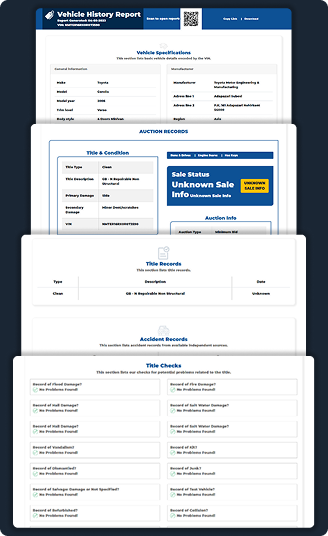How to secure a vehicle at night: What you need to secure a vehicle at night
To check a BMW chassis number, simply use the BMW Chassis number check tool provided by Vehicle History.
When it comes to buying a pre-owned BMW or conducting any vehicle-related documentation, one crucial piece of information you need is the chassis number. The chassis number, also known as the VIN (Vehicle Identification Number), is your vehicle’s unique identifier. By checking the chassis number, you can unveil essential details about your BMW’s history, specifications, and authenticity. In this article, we will guide you through the process of checking a BMW chassis number, empowering you with the knowledge to make informed decisions.
Here are some steps you can take, these steps work for all including beginners:
Step 1 Understanding the Chassis Number:
The chassis number, typically a 17-character alphanumeric code, contains vital information about your BMW. Each character in the chassis number carries specific significance, including details about the manufacturing location, year, model, and more. By decoding the chassis number, you can gain insights into your BMW’s history and verify its authenticity.
Step 2 Locate the Chassis Number:
The chassis number can be found in several locations on your BMW, ensuring easy access for verification purposes. Here are a few common areas where you can find the chassis number:
- a. Dashboard: Check the driver’s side of the dashboard, near the windshield. You can view the chassis number by looking through the windshield from outside the vehicle.
- b. Door Jamb: Open the driver’s side door and inspect the area where the door latches. Look for a sticker or metal plate containing the chassis number.
- c. Engine Bay: The chassis number may also be located in the engine bay, usually on the firewall or near the strut tower.
- d. Ownership Documents: The chassis number is often printed on important
- documents such as the vehicle registration certificate, insurance papers, and service records.
Step 3: Decoding the Chassis Number
Once you have located the chassis number, decoding it will reveal valuable information about your BMW. Although the decoding process may vary slightly depending on the model year, the general structure remains consistent. Here’s a breakdown of the typical chassis number structure:
- Position 1-3: World Manufacturer Identifier (WMI) – These characters identify the manufacturer and manufacturing location.
- Position 4-9: Vehicle Descriptor Section (VDS) – These characters provide details about the vehicle model, body style, engine type, and other specific features.
- Position 10: Vehicle Model Year – This character represents the year of manufacture or the vehicle’s model year.
- Position 11: Assembly Plant – This character indicates the location where the vehicle was assembled.
- Position 12-17: Serial Number – These characters represent the unique serial number assigned to the vehicle during production.
By understanding the significance of each position in the chassis number, you can interpret the alphanumeric code to uncover details about your BMW.
Step 4 Verifying Authenticity and History
Verifying the authenticity of a BMW is crucial, especially when purchasing a used vehicle. By checking the chassis number against official records, you can ensure that the vehicle’s identity matches the information provided by the seller. This step helps prevent potential fraud and ensures that you are making a reliable purchase, you can make use of our online vehicle history tool which has access to some relevant databases and provides detailed historical and specification information about your vehicle.
To verify the authenticity of a BMW, you can utilize various online resources, including the official BMW website, where you can enter the chassis number in a dedicated VIN lookup tool. This tool can provide accurate information about the vehicle’s production details, specifications, and any outstanding recalls.
Vehicle history report can provide information on:
- Title
- Accident
- Theft
- Auction
- Technical Specifications

Chassis Number Tampering
While rare, it’s essential to be aware of the possibility of chassis number tampering. Dishonest individuals may attempt to alter or remove the chassis number to hide a vehicle’s true identity or conceal its history. To ensure the integrity of the chassis number, carefully inspect it for signs of tampering, such as inconsistent font styles, evidence of scraping or alteration, or mismatched characters. If you suspect any tampering, it is advisable to seek professional assistance or consult with an authorized BMW dealership. Further research can be performed by obtaining the window sticker from Detailed Vehicle History.
If you encounter any difficulties in locating or decoding the chassis number, or if you have concerns about the authenticity of a BMW, it is always advisable to seek professional assistance. Certified BMW dealerships or qualified automotive technicians have the expertise and resources to assist you in verifying the chassis number, accessing vehicle records, and providing accurate information about the vehicle.
It is important to note that checking the chassis number is not only for buyer protection but also for legal compliance. Properly documenting and verifying the chassis number ensures adherence to local laws and regulations related to vehicle ownership, registration, and transfer. By ensuring the accuracy of the chassis number, you can avoid potential legal issues and ensure a smooth transaction process.
Checking the chassis number of a BMW is a simple yet essential task that unveils valuable information about your vehicle. By locating and decoding the chassis number, you can gain insights into your BMW’s history, model, and authenticity. This knowledge empowers you to make informed decisions when buying a pre-owned BMW or conducting any documentation


